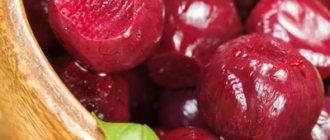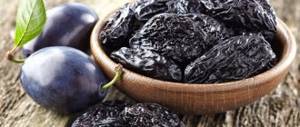Benefits and harms
Nuts are considered one of the most delicious foods , which can retain all of its important and tasty qualities for quite a long time.
In nature, there are many varieties of this fruit and each of them has certain benefits for the human body.
The most popular types of nuts and their benefits:
- Gretsky . Very useful for anemia and vitamin deficiency.
- Almonds . Helps cleanse the kidneys and blood, crushes stones in the liver and cleanses it.
- Peanut . An excellent assistant for preventing cardiovascular diseases. It also helps improve the male reproductive system.
- Cashew . Improves the body's immunity.
But no matter what beneficial properties nuts have, they can still harm a person . Overcooked fruits cause great harm; they negatively affect liver function.
Also, nuts are contraindicated in case of individual intolerance .
Stale fruits can also cause harm to health, since the fats in them oxidize and acquire toxic properties. Spoiled nuts are quite capable of causing poisoning or causing ulcers.
Benefits of nuts
Each type of nut has a beneficial effect on organs and systems. Thanks to vegetable oils, the production of hormones of the endocrine system is normalized, vitamins stimulate the immune system, minerals in free form and in the composition of inorganic salts normalize the transport of substances through the cell membrane.
Walnut
Of the minerals, walnuts are rich in phosphorus, calcium, iron, potassium, iodine and magnesium. Vitamins contained in the product: retinol (vitamin A), ascorbic acid (vitamin C), tocopherol (vitamin E), B vitamins. The nut promotes the production and formation of red blood cells, stabilizes the functioning of the liver and kidneys, relieves a person from disorders of the nervous and immune systems and provides an adequate immune response to external stimuli.
Pine nut
Due to the large amount of carbohydrates and proteins in the amount of one hundred grams, a small pine nut can quench appetite, restore performance, and regulate metabolic processes. In combination with honey it has an anti-inflammatory effect. Thanks to essential oils, it destroys microorganisms. Pine nuts are superior in composition to other types in terms of the concentration of minerals and inorganic salts.
Almond
The nut is highly recommended by endocrinologists and nephrologists; almond oil is effective for inflammatory and sclerotic kidney diseases, disorders of the production of sex hormones in men and women.
Hazelnut
Due to the high concentration of vitamin E, a natural antioxidant, it slows down the aging process of the skin. Mandatory in combination with dried fruits for heart and vascular diseases, enriched with potassium. Hazelnuts restore strength and fight constant fatigue.
Peanut
Particular attention is paid to the “groundnut”, as it is called in literary sources. The benefits of peanuts are comparable to those of other nuts, and the cost is much lower compared to others. It turns out that the warehouse of useful microelements is more accessible to a person with an average subsistence level.
The product is best consumed slightly fried; it acquires a pleasant taste and is freed from the surface shell, which is not absorbed in the gastrointestinal tract. Peanuts include a group of B vitamins and improve the transmission of nerve impulses, affecting attention and memory.
Is it possible to eat nuts if you have gastritis?
A person who suffers from gastritis usually adheres to a special diet. At the same time, during an exacerbation of the disease, he has to adhere to stricter dietary standards, and during remission he is allowed to consume much more food. But often people suffering from inflammation of the stomach ask themselves the question: are they allowed to eat nuts for gastritis?
If you pay attention to the diet prescribed for gastritis, you will notice that nuts do not fall into the category of prohibited or permitted products . So what should we do? Are there them or not, and if so, which one is better to give preference to?
Expert opinion
Irina Vasilievna
Practicing gastroenterologist
Gastritis, both with high acidity and low acidity, always excludes the intake of coarse foods . Rough foods are those that contain a lot of fiber, and it is, as a rule, poorly accepted by an inflamed stomach.
And nuts are especially rich in fiber and fats of plant origin, which in turn will not bring anything useful to the stomach with gastritis with high acidity.
Such indicators do not mean that this product should be abandoned if you have gastritis, no, you just need to adhere to a certain measure of their consumption .
Different types of nuts have different effects on the stomach. Therefore, it is worth determining which of them can be included in your diet in larger quantities, and which, on the contrary, should be limited.
With increased acidity
If you have high acidity, you should include only fresh nuts in your diet and in no case should you eat them fried or, even worse, moldy.
Expert opinion
Irina Vasilievna
Practicing gastroenterologist
In case of high acidity, it is best to replace the fruits themselves with oil from them. For example, cedar oil, almond oil, and walnut oil have very beneficial properties.
It is much better absorbed by an inflamed stomach and will have a positive effect on the entire body.
At low
With gastritis with low acidity, nuts become real helpers for the stomach , as they help to better process food.
If gastric secretion is low, it is better to consume nuts in crushed form for better absorption.
For ulcers and other aggravating
Most doctors prohibit patients who suffer from stomach ulcers or atrophic diseases of the duodenum from eating nuts.
But sometimes the exception is walnut, which is the main component of many medicines.
Walnuts
Many nutritionists are still arguing about whether people with gastritis can eat walnuts. Of course, in moments of exacerbation, such a product is strictly contraindicated for use .
But during the period of remission, walnuts can be included in your diet , but only for those patients who have increased stomach acidity. They are allowed to eat about 40-60 g per day only in fresh form.
- For chronic gastritis, walnuts can be included in your diet, but in quantities not exceeding 50g.
- You should not lean too much on them, as they contain fats, which in large quantities are harmful to an inflamed stomach.
On our website: Can gastritis be cured with aloe juice? Yes, but there are nuances
Peanut
In case of inflammation of the mucous membrane with varying acidity, peanuts, as a rule, are prohibited from being included in your diet, like any other legumes.
But if the disease does not make itself felt for a long time, then it is allowed to eat this fruit no more than 30 g per day.
Cedar
Due to the fact that pine nuts have a positive effect on the gastrointestinal tract, namely, it relieves various inflammations in the stomach, it is prescribed to those people who suffer from high acidity. The permissible dose per day is 30g.
In case of high acidity, cedar fruits are recommended for consumption , but only in quantities not exceeding 30 g per day.
Which fruits are best to avoid?
In case of diseases of the mucous membrane, you will have to abandon the following varieties:
- Cashew nuts;
- Hazelnut;
- Almond;
- Pistachios;
- Brazilian nut.
All of them have a rather strong effect on the gastric mucosa and sometimes it is these nuts that become the culprits of exacerbation of the disease.
By the way, the nut is delicious to eat with honey, try it sometime.
Treating gastritis with nuts
Of course, it is impossible to create a complete treatment for gastritis with the help of nuts, but some of their types can be organically included in the patient’s diet. The main ingredient for many recipes is pine nuts, although it can be a different type.
As a standard, doctors recommend that patients drink a special nut decoction, which requires dried cedar tree leaves. For each glass of boiling water, take a tablespoon of leaves. This mixture is infused for about 15–20 minutes and filtered through cheesecloth into a separate container. Afterwards, throughout the day, the resulting decoction is drunk a glass per hour.
Another effective option for a diet dish is a salad based on walnuts or pine nuts. It will be done as follows:
- two sour apples and four carrots are grated on a fine grater and placed in a bowl;
- approximately 100 grams of natural cedar or walnut kernels are crushed using a blender for solid products or a coffee grinder and also go into a bowl;
- Add 50 grams of natural honey to this mixture and mix thoroughly.
You can eat one serving of this salad every day. It saturates the body with vitamins and strengthens the immune system without having any special mechanical effect on the stomach. It is worth adding that for acute gastritis, some doctors advise drinking a teaspoon of cedar oil an hour before meals for about three weeks.
We recommend: Table number 2 - an important diet for the treatment of gastritis
Rules to follow when purchasing
Expert opinion
Irina Vasilievna
Practicing gastroenterologist
If you buy nuts in shell, you should definitely inspect it carefully. Under no circumstances should there be any chips, cracks, or even holes on it. The shell should have a uniform color without any spots.
The most important sign of a good and fresh fruit is its weight: based on the size of the nut, it should be quite heavy.
Purchasing shelled nuts should be avoided , since it is unknown how long and where they were stored. But if you don’t have others, then first of all you should look at their cores. They should be meaty, slightly plump and firm.
On our website: Buckwheat porridge and gastritis: how to cook it correctly?
Benefit
Nuts have rightfully earned high praise from nutritionists, because these products are rich in minerals and vitamin components, oils and proteins. The benefits of nuts are difficult to overestimate.
- They stimulate brain performance;
- Helps overcome stressful situations and conditions;
- Normalize blood circulation;
- Promote the removal of bad cholesterol, which is deposited on the vascular walls;
- Help cleanse the stomach of harmful food components;
- Strengthen and help regenerate the gastric mucosa;
- Normalizes the course of digestive processes.
All components contained in nuts are necessary for normal intraorganic activity.
Although nuts contain a lot of useful components, not all gastritis sufferers can include them in their diet. Although you can successfully prepare healing infusions, decoctions, and alcohol tinctures from them.
Gastroenterologists prohibit eating only nut kernels, but if you crush them into a powder form, they are quite suitable as an additive to various dishes such as desserts or cereals.
Tips and tricks
Even if your gastritis does not cause you noticeable discomfort (abdominal pain, belching, weak stools), this does not mean that it will not lead to some complications in the future, for example, Barrett's esophagus (not cancer, but still also dangerous disease).
Therefore, in any case, you should adhere to certain tips that will help and make it easier to fight the disease.
- First of all, of course, you should stop drinking strong alcoholic drinks . Alcohol has an aggressive effect not only on the stomach, but also on the entire body as a whole. See acceptable drinks here.
- It is worth monitoring your diet throughout the day , it is advisable to eat each meal at the same time every day and not lean too much on food, it is better to eat more often, but in small portions.
On our website: Is it possible to eat sweets with gastritis?
Doctors' opinion
Alexander Lebyadkin, gastroenterologist, 31 years old: “Gastritis requires an integrated approach to treatment. Therefore, for gastritis, I very often prescribe eating various nuts. Examples of good nuts include walnuts, pine nuts, and peanuts. These nuts contain a large amount of useful vitamins and microelements, and the nuts themselves do not irritate the gastric mucosa, so they can be eaten for gastritis. However, I would not recommend eating cashews and almonds if you have gastritis - these nuts contain substances that require additional hydrochloric acid to digest, which can aggravate the symptoms of gastritis.”
According to doctors, it is better to exclude almonds and cashews from the diet for gastritis
Irina Antonova, nutritionist, 40 years old: “With gastritis, it is necessary to exclude sour, salty and fatty foods from the diet, as well as sweets, alcohol and some other foods. Unfortunately, many people cannot withstand such a strict diet and, a few weeks after starting treatment, begin to eat the foods they are accustomed to eating. This leads to gastritis becoming chronic. This is why it is very important to choose the right diet for gastritis. If a person really loves sweets, then they need to be replaced with some other products, for example, nuts. For people who suffer from gastritis, I recommend eating peanuts, walnuts and pine nuts daily. Cashew nuts can be eaten for gastritis, but their amount should be no more than 5 g per day. But I recommend refraining from eating almonds for gastritis.”
Is it possible to eat nuts with this diagnosis?
Eating nuts with gastritis is not always possible: depending on the health of the patient’s digestive system, the doctor gives recommendations individually. The possibility of eating nuts for gastritis depends on their type. Different varieties contain different amounts of fiber, organic acids, protein, and allergens, which have a direct impact on the health of the stomach.
Five reasons to eat walnuts every day
- They are a good prevention of heart disease due to their high content of gamma tocopherol. Normalizes the functioning of the heart muscle.
- Like some dried fruits, they contain many antioxidants. Slow down aging, prevent the development of cancer.
- They are an excellent dietary product. They satisfy the feeling of hunger for several hours, helping to lose extra pounds.
- Walnuts do not irritate the mucous membranes at all. They promote healing of ulcers and restoration of the structure of the mucosa, which is especially important for atrophic gastritis.
- Eat walnuts with honey regularly to normalize your nervous system and mental health. Scientists have proven that this product significantly reduces the symptoms of depression, relieves drowsiness and fatigue.
Useful qualities of the product
Nuts have a beneficial effect on the body. Under the influence of vegetable oils, the functioning of the endocrine system is normalized, minerals improve the supply of important elements at the cellular level, and vitamins guard the immune system. Each variety of nuts has its own advantages:
- Peanut. In addition to the benefits, consumers note the low cost of the product. Moderately roasted groundnuts have a pleasant taste and are easier to remove from the skin, which the gastrointestinal tract cannot digest. The B vitamins included in the composition improve memory and concentration, and enhance the transmission of brain impulses.
- Cashew nuts. The creamy, delicate taste makes the nut not just a favorite among other varieties - it is a champion in the content of omega acids and vitamin B. Cashews contain a “beauty vitamin” that strengthens nails and hair, and fiber is the best preventative against constipation.
- Walnuts. They have antibacterial and restorative properties. With constant use, the functioning of the cardiovascular system is normalized, and the aging process slows down. The product improves the psycho-emotional state and is able to heal the mucous membranes of the gastrointestinal tract.
- Cedar. According to doctors, this is the best dietary product. Siberian nuts strengthen the immune system and restore vision. The protein content in the product is almost 1.5 times higher than in chicken fillet - and almost all of it is absorbed by the body. Nuts have a beneficial effect on the gastrointestinal tract, cardiovascular and nervous systems.
- Hazelnut. Contains carotene, vitamins C and B, iron and potassium. Strengthens the walls of blood vessels, which prevents the development of varicose veins.
- Nutmeg. It is not the nut itself that is eaten, but its seeds and dried auricles. This is a spicy powder seasoning that gives dishes a special taste and aroma. Relieves pain due to gastritis, but people with the hyperacid form of the disease should not use nutmeg. Even a small amount of spice increases stomach acidity, causing heartburn.
What types of nuts can you eat for gastritis with high and low acidity?
Gastroenterologists categorically prohibit eating nuts on an empty stomach, because the product contains a fairly high content of vegetable fats. When digested, they negatively affect the liver and pancreas.
Against the background of gastric and duodenal hypersecretion, a gastritic patient experiences a severe pain attack. If we talk about nuts from the store, which are usually heavily fried, sprinkled with salt and flavorings, then they should not be in the patient’s diet.
If the inflammatory pathology has worsened, and a hyperacid environment is observed in the stomach cavity, then any nuts are prohibited for patients.
If the inflammation of the mucous membrane is chronic, but remains in a state of long-term and stable remission, then eating nut kernels will only bring benefits. You just need to follow your doctor’s instructions and observe the daily dosage of this product.
Gretsky
Doctors allow gastritis sufferers to eat no more than 20 g of walnuts per day, and they must be crushed.
If you eat the product regularly and in compliance with gastroenterological recommendations, then it will exclusively benefit the patient:
- Walnut kernels help strengthen the gastric walls;
- Helps to recover from thyroid pathologies and anemia;
- Copes with vitamin deficiencies typical of the autumn and spring periods;
- Helps improve cardiovascular activity, eliminates unhealthy cholesterol;
- Promote renewal of gastric cellular structures and tissues;
- Normalize blood sugar and protect against harmful radiation exposure.
Therefore, it is necessary to include walnuts in the diet of patients, but only in crushed form, in limited quantities and in stable remission.
Tincture
Alcohol tincture made from green walnut is useful for stomach inflammation. It's quite simple to prepare.
- About 10-15 green fruits are thoroughly washed and cut into small slices.
- To avoid oxidation, quickly crushed nuts are poured with a bottle of vodka or alcohol (70%) immediately after slicing.
- The glass container is tightly sealed and stored in a dark cabinet for 2 weeks.
- After aging, the tincture is drained and poured into dark glass bottles.
- The finished product has a subtle balsam scent and has a dark chestnut tint.
Cedar
It is recommended to eat pine nuts in case of excess gastric acidity, but the daily dosage should not exceed 30 g. Nuts from pine cones have pronounced anti-inflammatory properties, eliminating these processes in the duodenum and gastric cavity.
In addition, cedar nuts effectively fight cholesterol deposits and plaques, help improve cardiac function, have an immunostimulating effect and nourish brain structures.
Among all the nut varieties, pine nuts are considered the healthiest, but they are quite expensive, which sometimes prevents them from being on our table as often as we would like.
The composition of the proteins from these nuts is almost the same as that of human proteins, which is why they are absorbed by approximately 99%.
Provided that this product is tolerated normally, it can be consumed no more than 30 g per day. But cedar oil is considered more useful, as it envelops the mucous membranes, creating a dense protective layer on them.
Almond
Almonds can be sweet or bitter, depending on their content of amygdalin, a bitter component that provides a specific almond flavor.
- It is not recommended to eat unripe or bitter varieties of almonds for hyperacid types of gastritis, because they can provoke severe intoxication, which only worsens the inflammatory process on the gastric mucosa.
- Sweet almond varieties provide an enveloping, anticonvulsant and analgesic effect. It is recommended to take it for urolithiasis and gall and liver diseases, to cleanse the bloodstream.
If gastritis occurs with hyperacid symptoms, then almonds reduce acidity, but you just need to eat them raw and no more than 50 g per day.
Hazelnut
Hazelnut kernels are also quite useful, because they get rid of bad substances accumulated in the patient’s body.
As a result of regular, but correct and moderate consumption of hazelnuts, patients' immune forces are quickly strengthened, and damaged gastric mucous membranes are partially regenerated.
Peanut
In general, peanuts are considered a legume; they are simply called groundnuts. Legumes, as you know, are contraindicated for gastritis of any acidity. But if gastritis does not remind you of itself for a long time, being in the remission stage, then you can eat no more than 30 g of nuts.
With proper and limited consumption of peanuts, the following effect is observed:
- Bile stagnation is prevented and tumor processes are stopped;
- The body receives a lot of substances that are useful and necessary for full functioning;
- Myocardial tissue and nervous system structures are strengthened;
- Bad cholesterol is removed.
In case of inflammation of the gastric mucosa, you can only eat peeled peanuts; you cannot fry them, although you can dry them a little in the oven on a baking sheet.
Cashew
Some experts are of the opinion that cashew-based oil helps speed up the healing of erosive and ulcerative lesions on the mucous membrane of the digestive organs. Others, on the contrary, believe that these nuts contain harmful components, and therefore will only harm the gastritis sufferer, irritating the mucous membranes of his stomach.
There are many opinions, but in general it is difficult to call cashews such a useful and necessary product for inflammation of the gastrointestinal tract. Therefore, if you have gastritis of any type and form, it is better to avoid using this nut variety so as not to provoke unwanted complications.
Erosive gastritis and nuts
Gastritis is a common and fairly well-known disease. But, it has several varieties. For example, the erosive type implies the presence of ulcers and wounds in the stomach. Are nuts recommended for erosive gastritis? In this condition, walnuts can be eaten. It does not cause irritation of the mucous membrane, and additionally contributes to the restoration of the organ and the healing of wounds.
If the acidity is high, then you can eat them in small quantities. What nut is good for erosive gastritis? Peanuts resist cancer cells, and are desirable for erosive gastritis; regular consumption will relieve problems with digestion of food. Walnuts can also be eaten in small quantities.
Chronic gastritis and nuts: what does the doctor advise?
People with this stage of the disease adhere to a special diet; there is a list indicating which foods to eat and which to avoid. Nuts are not in any of these groups. Therefore, questions arise. Doctors say that you can eat nuts, but only within reasonable limits.
Pine nuts, walnuts no more than 25 grams per day with high acidity. Almonds will only aggravate the patient’s condition, and hazelnuts contain aggressive organic acids. Therefore, experts recommend excluding it from the diet. Peanuts tend to cause fermentation and acidify the environment.








